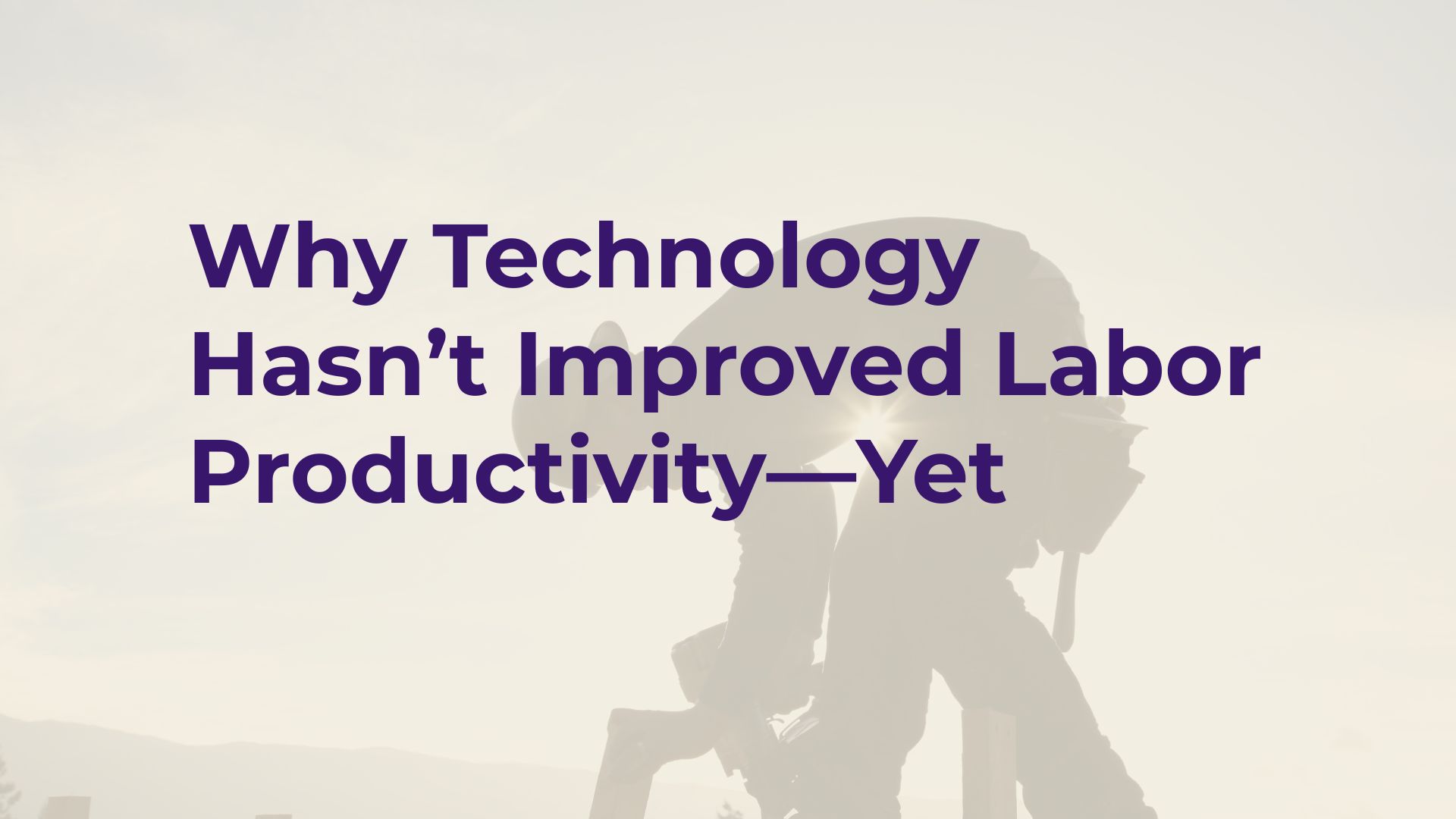
Introduction
If construction technology is ever going to deliver on its promise, it has to move beyond dashboards and documentation. The next wave of innovation must focus on what actually happens on the jobsite—and what it takes to get real work done.
Productivity in the field hasn’t improved because most software still operates at the edges of the work: tracking, reporting, and coordinating from the outside. But the future lies in tools that support the crew directly—tools that fit into the jobsite environment, minimize disruption, and scale across projects and people.
In this post, we outline three shifts the industry needs to make if it wants to turn software into a driver of real productivity gains.
1. Focus on Supporting the Work, Not Just Documenting It
Let’s admit it: construction is physical work, and software can’t directly change that reality. No app can speed up how quickly concrete sets or help someone physically install drywall faster. But consider the analogy of a delivery driver: software can’t improve the act of driving itself, yet it significantly improves the delivery process by selecting better routes, avoiding delays, and ensuring packages are organized effectively.
Similarly, software in construction can’t help someone perform their physical tasks better or faster, but it can dramatically boost overall productivity by improving how the work is organized and coordinated. For example, software can:
- Reduce wasted time caused by delays, miscommunication, or rework
- Match tasks precisely to crew members’ specific skills
- Help team up people who work better together
- Forecast labor and material needs accurately, minimizing costly downtime
The real productivity gains come not from pushing workers to move faster physically, but from removing obstacles and creating smoother workflows around them. The goal is software that actively supports the work as it happens, rather than simply documenting it after the fact.
2. Intelligent Tools That Stay Out of Your Way
Software designed for heavy interaction doesn’t fit the reality of construction jobsites—and often, it just doesn’t get used. The more effort required from crews to “use” software, the less likely they are to engage consistently. Likewise, tools that demand extensive training create a barrier to adoption, particularly with large, frequently rotating workforces.
Consider something as simple but crucial as arriving on-site on time: workers can’t be expected to constantly check traffic conditions. Instead, intelligent software could proactively notify an employee if traffic is building, suggest leaving earlier, and simultaneously inform the supervisor if someone might be delayed. With the widespread availability of AI, scenarios like these—anticipating issues, proactively communicating, and adjusting plans behind the scenes—are becoming achievable.
The real productivity benefit comes from software that actively supports the crew while demanding minimal interaction. Tools that stay quietly in the background and step in only when needed don’t just reduce friction; they create smoother workflows, faster adoption, and tangible improvements in field productivity.
3. Standardize Digital Training by Establishing Common Patterns
No matter how “smart” we make software—automating tasks, reducing clicks, and minimizing disruption—crews will still need to interact with it. And when every software vendor uses a completely different interface, it becomes impossible to train workers in a way that carries from training to job and from one jobsite to another. Apprentices may learn how to “use software” in general, but unless they’re learning the right software—or even the right version—that skill becomes practically useless.
When workers are required to relearn new interfaces with each project or employer, the skill they gained before is lost—and so is the productivity that came with it.
That’s why the industry needs to establish common patterns and guidelines—not identical interfaces, but shared design principles and workflows. If crews’ interactions with apps—like logging time, viewing schedules, or reporting issues—followed common patterns, they could be trained on the use of apps and expected to apply those skills anywhere, just like they do with hardware tools.
Trade associations like ABC are well-positioned to drive this change by organizing vendor consortia and promoting training-ready standards. Vendors can still innovate behind the scenes, where their real value lies, while the interface remains familiar or easy to follow for the people actually using it.
This isn’t about limiting innovation. It’s about unlocking it—by making software skills as transferable and trainable as tool skills already are.
Conclusion: The Next Generation of Construction Software
For construction technology to finally deliver on productivity, it has to stop orbiting around the work—and start supporting it directly.
That means designing tools that don’t just document, but actively improve the conditions for productive work. It means minimizing friction for crews, using intelligence behind the scenes, and establishing industry guidelines that make training and skill transfer possible at scale.
The most effective software in construction won’t be the one with the most features. It will be the one that crews barely think about—because it’s as minimalist and intuitive as the hardware tools they use, while doing a lot more for them behind the scenes. That’s what it takes to truly move the needle on field productivity.



